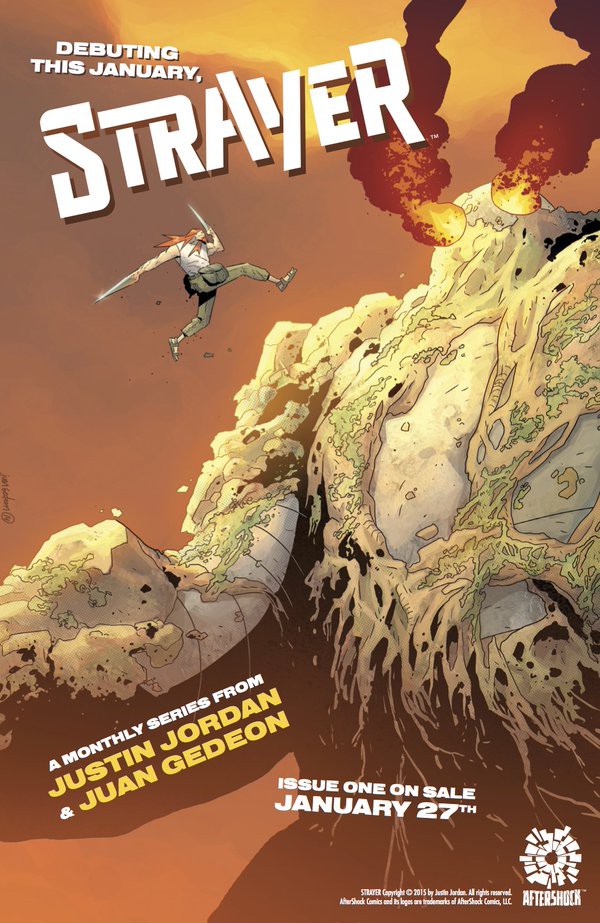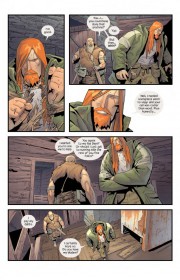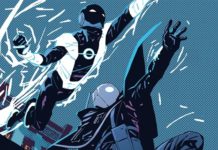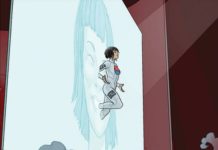Justin Jordan: Basically, it’s a quest to fix the world. Not, actually, save the world. The world is puttering along in a way that’s actually probably sustainable more or less indefinitely. But the world of Strayer used to be a grander, more wondrous place, and Mala believes that it can be again. Whether anyone wants to be or not.
J.J.: Fafhrd and the Grey Mouser.
I mean, it’s hard for me to put a finger on just what goes into any one project, since my head is a boiling pop culture stew apt to overflow at any given time, but that’s one of the bigger and more obvious influences on the book.
But also the idea of what we’re leaving behind. So, we’re using up stuff that at least hypothetically can’t be replaced – oil, coal. What happens if we use all that, or make it inaccessible?
Which is what happened in the past of Strayer – the resources are gone. You have trees and rocks and that is pretty much it. Which is also a way of me playing with the fantasy trope of medieval stasis, where the world never seems to get more advanced. That’s pretty much happened to the world in Strayer, not because they lack the intelligence, but knowing how to, say, make a steam engine is fairly useless if you don’t have metal.
J.J.: A page rate.
Which sounds like me being a smart ass and or a total mercenary, but is at least partly true. One of the big problems about putting together a creator owned project is making the money work.
I mean, I can write a bunch of different things, so not making much or anything on one project is not a dealbreaker. But doing a book for an artist is basically a full time job, and it’s hard to make projects happened unless you’re wealthy enough to finance it (I’m not) or you can find some to foot the bill.
The other part of it is that I wanted to be there in the beginning of something cool. If AfterShock becomes a big deal, I’ll have been there on the ground floor, you know. And that’s just cool.
J.J.: I actually brought the entire Strayer team, from Juan to Tamra to Rachel, to AfterShock. Juan and Tamra have worked together before, but that was, I think, because of the pitch we did for Strayer. So that worked out nicely.
Juan has a very dynamic, very unique style that I thought was perfect for the book. Likewise, Tamra is one of the best colorist around and we’ve been trying to work together for years now (and indeed, managed to do on John Flood from BOOM!) and her colors are an awesome compliment to Juan’s line art.
![]() AfterShock Comics
AfterShock Comics
![]() Interview with Brian Azzarello in Zona Negativa.
Interview with Brian Azzarello in Zona Negativa.
![]() Interview with Garth Ennis in Zona Negativa.
Interview with Garth Ennis in Zona Negativa.
![]() Interview with David Hine in Zona Negativa.
Interview with David Hine in Zona Negativa.
![]() Interview with Justin Jordan in Zona Negativa.
Interview with Justin Jordan in Zona Negativa.
![]() Interview with Amanda Conner and Jimmy Palmiotti in Zona Negativa.
Interview with Amanda Conner and Jimmy Palmiotti in Zona Negativa.
![]() Interview with Mike Marts in Zona Negativa.
Interview with Mike Marts in Zona Negativa.











